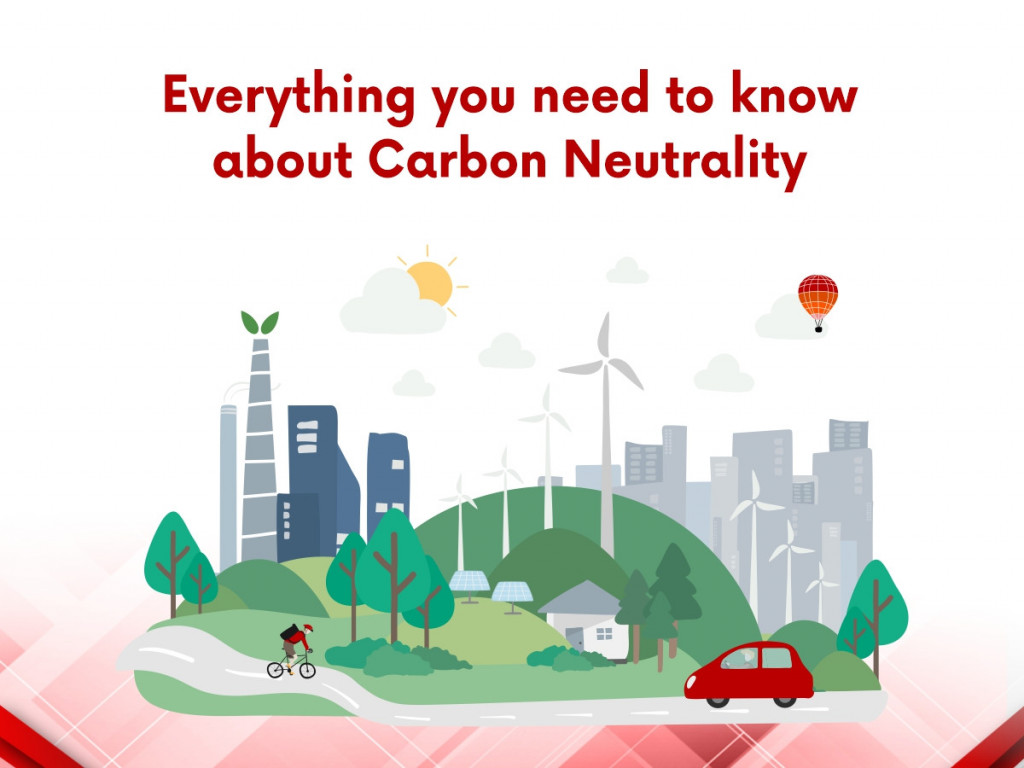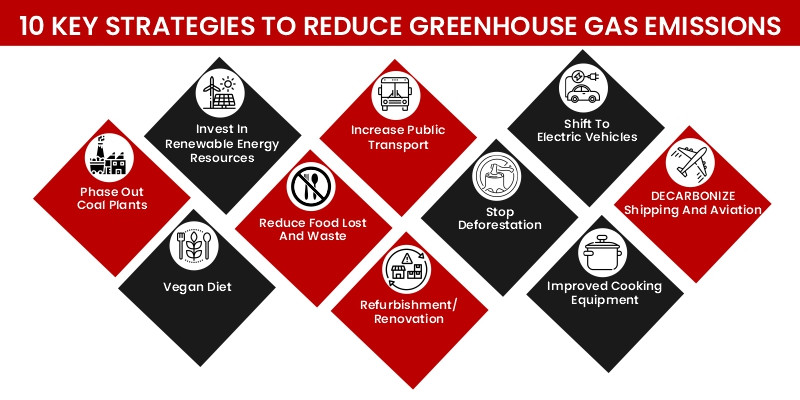
Close


One could consider carbon neutrality to be the “fifth industrial revolution.”
The time to talk about climate change is long over. The survival of the human race as a species is literally at stake, so it’s high time to become a Carbon Neutral Planet. Extreme weather occurrences have long been nature’s way of flashing a “code red” warning to humans. The underlying causes of climate change, such as rising human populations, biodiversity loss, and pollution, can all be traced back to unsustainable production and consumption practices.
As the human population approaches 8 billion, carbon neutrality is now an absolute requirement.
No matter who you are—a nation, a city, a company, or an individual—if you have a carbon footprint, you owe it to the planet that supports you to do everything in your ability to make up for the harm inflicted.
Carbon Neutrality involves striking a balance between carbon emissions and carbon absorption from the atmosphere by carbon sinks.
It is the same as achieving “Net Zero”, which means reducing Greenhouse Gases (GHG) emissions to almost zero with any leftover emissions being reabsorbed into the atmosphere, oceans, forests, or soil. GHGs are the harmful gases produced by irresponsible human activity that raise the earth’s temperature and eventually result in irreversible climate change.
GHG emissions must be decreased by 45% by 2030 in order to attain Net Zero by 2050 if global warming is to be limited to 1.5°C or less.
After discussing carbon neutrality, or carbon neutral, we can go on to two related terms that often cause confusion when used inaccurately:
Carbon positive means that an activity has a negative impact on the environment since it adds more carbon to the atmosphere than it lessens or balances.
Carbon negative means that a process goes beyond carbon neutrality by removing more CO2 from the atmosphere than it produces.
Measurement, reduction, and offsetting must all be done in order for net emissions to be zero.
All GHG emissions connected to products and processes are mapped as the first step in the measurement procedure. An analysis known as the life cycle analysis (LCA) is carried out to determine a product’s or service’s carbon footprint, taking into account every stage from raw material extraction to production, transport, distribution, use, reuse, maintenance, and disposal.
The approach is slightly different when calculating the LCA of an organisation since emissions must be split into three categories: Scope 1, emissions are those produced directly by organisational structures like offices and factories; Scope 2, emissions are those associated with the energy supply; and Scope 3, emissions are those resulting from all activities not under the direct control of the organisation, like travel, waste disposal, investments, and logistics.
The analysis now moves on to the second phase, which is reduction. For instance, if a business learns that packaging contributes significantly to a product’s climate impact, it may try to find a more environmentally friendly replacement. On the other hand, you can buy raw materials from nearby vendors instead of transporting them from outside. Utilizing renewable energy is another successful strategy. This can be done by establishing special plants to create it or by purchasing it from others.
The remaining emissions that cannot be eliminated completely can be offset. Carbon neutrality is attained when the balance between emissions and offsets equals to zero. The Kyoto Protocol laid the groundwork for carbon credits, a kind of stock exchange where the currency being traded are CO2 equivalent emissions, one of the most successful and widely used offsetting mechanisms at an international level. Buyers are those who create CO2 and, in order to make up their debt, pay someone else to remove emissions from the environment. Sellers, on the other hand, are those parties who are reducing emissions or absorbing greenhouse gases and, as a result, have a “credit.”
A “Carbon Credit” entitles the holder to emit a specified amount of carbon or other greenhouse gases. The emission of a mass equal to one ton of carbon dioxide is allowed with one credit.
This is essentially a capitalist answer to an environmental issue that has made carbon a valuable commodity. Leaders from around the world agreed to adopt a system of carbon trading when they signed the “Kyoto Protocol” in 1997. They also promised to reduce their emissions by an average of 5% from 1990 levels. This ground-breaking environmental agreement mandated that nations wanting to emit more buy carbon credits from nations that emitted less. That’s how the carbon market came into existence, when carbon credits started to be bought and traded.

In addition to helping communities and society as a whole, becoming carbon neutral is essential for preventing the impacts of climate change. The benefits of achieving carbon neutrality include:
Improved health and less environmental pollution
A stimulus for green jobs and sustainable economic growth
Increased food security
The enhancement of ocean health and an end to the loss of biodiversity
According to the NGO Carbon Trust, companies can also directly profit from carbon neutrality:
The company’s dedication to decarbonization and determination to make up for left-over impacts are demonstrated by this. As a result, the company distinguishes itself as an environmentally responsible brand and strengthens its green credentials.
They support the UN Sustainable Development Goals and lessen both public and private risks related to climate change.
The overconsumption of fossil fuels and growing industrialization around the world have caused greenhouse gases to be released, raising the global temperature and causing environmental problems. Thus, achieving net-zero carbon emissions is imperative.
Carbon neutrality will significantly reduce global warming and resolve our energy crisis. It will also improve the air quality and sustainability of the planet.
As a result, it could be viewed as an industrial revolution that marked a significant turning point in human history. Since the fundamental problems could be resolved by achieving carbon neutrality, it would be the first step toward a sustainable future in which nature and humans can coexist.
Authored by – Guniyal Bagga
Please Subscribe our news letter and get update.
© Copyright 2023 – Wissen Research All Rights Reserved.
Powered by VintageCoders